By Jackie Clay-Atkinson
Providing for your family is a basic self-reliance tenet. I don’t look at myself as a “prepper” (a word referring to folks who store food, water, medical supplies, guns, ammunition, etc. to survive various disasters). I’m simply a self-reliant person who wants to provide the needs, comfort, and ease of mind my family deserves. My native ancestors did it as a way of simple living and I’ll bet yours did, too.
Your preparedness plans are not necessarily for the end of the world as we know it, a terrorist attack, or some other frightening apocalypse. More likely, your plans will be needed in the event of the loss of a job, adult children moving in with you, elderly parents moving in, a divorce, a long-lasting ice storm, a hurricane, or an injury to a family member. All these simpler scenarios can severely impact a family’s ability to coast through daily living normally. It’s common sense to prepare for whatever may come.
So, you’ve stocked up on food and bottled water. You have alternative sources of energy if the power grid goes down. You have a medical kit and a bug-out bag should you have to evacuate unexpectedly. You may even have a plan of where to evacuate. But after talking to other families about their personal preparedness plans, I’ve seen a lot of common “holes.”
Because my late husband Bob, my toddler son David, and I lived high in the remote mountains in Montana for years, actually living and relying on our preparedness plans for extended periods, I soon found a few holes in our own preparations — and corrected them. Our seven-mile driveway was only usable from June to November (with a 4×4 truck), but that trail was so steep and rough that it took us 45 minutes to drive those seven miles during the good months. We didn’t go out often! And when you live like this (which we loved, by the way) you really need to plan far ahead. Here are a few things I learned in those years and also several common holes in preparedness plans.
Food
Stocking up on food is usually foremost in most families preparedness plans. While this is definitely a great idea, there is a right way and wrong way to go about this. First, never make huge purchases of “survival” foods on a credit card. You are digging yourself a deep hole here for an emergency that may never come. It’s easy to charge large purchases but it’s very hard to pay for them. Better to go about it more slowly — buy only what you can afford from week to week or month to month. When you go grocery shopping, buy a few extra easily-stored items that are on a good sale along with your regular purchases. Buy extra brown sugar, flour, dry beans, chocolate chips, canned corn, or whatever. All will store nearly forever, so buy a little extra every trip. You don’t need MREs or expensive “survival” foods. Regular home-canned or store-bought goods will keep for years in a relatively cool, dark, and dry location, packaged so insects and rodents can’t get at them.
Unfortunately, when most folks think of survival food, they stock up on foods their family doesn’t usually eat, such as dry beans, rice, wheat berries, dry milk, and corn for grinding. One thing I learned early on in living our remote lifestyle is that you quickly get tired of a rice-and-beans diet. You crave variety, especially sweets, fried foods, fruits, and vegetables. I’m not saying you shouldn’t stock up on dry essentials, but put away a wide variety of foods.
Learn to use and eat some of the foods you have stockpiled. Right now you may not make many baked beans, rice entrees, or pasta dishes, but do it occasionally so it becomes second nature to you. You don’t want to have to begin learning to use these foods in an emergency when everything seems stressful. Besides, it’s important to rotate your stored foods, using the oldest first, so you always have relatively fresh basics on hand to cook.
Buy as much canned meat as you can — a wide variety, not just Spam. Or, a better and more inexpensive option is to can your own meat. It is tremendously cheaper and you have the control of what goes into your jars. You do need a pressure canner to put up all meats and vegetables, but please don’t fear this essential but challenging piece of canning equipment. It will not blow up, I promise. All modern canners have at least one safety feature and most have two so they can’t overpressure.
Along with canned meats, you can enjoy your other basics: rice, beans, cornmeal, flour, and other dried foods. They add variety, flavor, and nutrition to these building blocks. In addition, you can do as I do and can up “meals-in-a-jar” such as chili, stews, soups, meatballs and sauce, etc. You simply have to open a jar and dump the contents into a pan and heat thoroughly to use these. (You can find meal-in-a-jar recipes in my book, Growing and canning your own food, available here: http://www.amazon.com/dp/B00B5LAG0M.)
While stocking up on food for your family, consider your pets and livestock as well. Do you have adequate, easily-stored pet and livestock food on hand to last through an emergency? Dry foods such as dog and cat food, birdseed, hay, and dry grain will last for months if stored in a rodent-proof location, such as a metal garbage can. The hay, of course, can be stored in the barn.
If your dog and cat food run out, you can simply cook enough for them when you cook your own meals. Pets can eat people food such as stews, soups, or casseroles if they must.
In your grab-and-go bag, add a few bags of jerky, some good-quality trail mix, and a few packages of dehydrated soup. (You do have plenty of water available, don’t you? And a small mess kit? And a way to heat water and other food?) I always have these in mine and I take my bag every time I go canoeing or camping. I can’t tell you how many times I’ve used these foods when the wild foraging and fishing weren’t so hot. A good bowl of thick, filling, cream of potato soup sure takes the empty spot out of your belly. The jerky is sustaining, not to mention tasty, and the trail mix is a good nibble to take the edge off hunger. Both tend to be a bit salty or sweet so you’ll need that bottled water.
While planning your food storage, consider the various emergency scenarios that are likely to happen in your area. When you live on the west coast, there might be wildfires, earthquakes, mudslides, or tsunamis. On the east and southeast coasts, hurricanes and severe winter storms often occur. In the northern plains, blizzards and tornadoes are more likely. In large cities it could be riots. All areas are prone to storms and power outages. In most common emergencies, you will probably be staying home. This goes for many other more severe emergencies, as well. Therefore, you can stockpile a good amount of food right in your basement, pantry, or outbuilding. Food is heavy, so you won’t be able to pack boxes of canned foods, bags of beans or rice, sugar, and flour into a backpack to last for months if you have to evacuate quickly.
An evacuation trailer
In Montana, a forest fire would have been our biggest emergency requiring evacuation. I had a big pantry full of food, but I knew I couldn’t possibly take it all if we needed to flee a roaring fire. So we bought a mid-sized fixer-upper travel trailer for $500 and spent a month tearing out rotted flooring, replacing cupboards, and fixing it up so it was ready to roll. We invested many hours of labor, but only spent about $100 in materials. When retrofitted, there were shelves to hold tins of bulk food supplies, which I filled from the pantry in the house. These were the basics: flours, cornmeal, beans, rice, baking powder, salt, masa harina, and dehydrated foods. The little pantry only took up floor space of 1×4 feet, floor to ceiling, but held a lot of food. I stocked up on tins of dehydrated foods along with some canned food that I kept in the cupboards.
We also stocked the closets with extra clothes, bedding, a hatchet, water buckets, propane bottles, hand saws, hammers, crescent wrenches, pliers, screwdrivers, rechargeable flashlights and batteries, a weather radio, rope, firestarters, candles, and more. Everything that could be of interest to mice was stored in tins or in other mouse-proof containers.
The trailer came with a propane fridge and a small propane stove (which had an oven), so we could keep food cold and cook tasty meals with ease. The trailer had a double bed as well as a futon so it easily could sleep three.
In the summer, we filled the water tank and had 75 gallons of fresh water at all times. This had to be drained in the fall so it wouldn’t freeze. In place of the toilet that came with the trailer, we used a bucket with a toilet seat on it filled with cedar chips to absorb dampness and kill odors. The bucket was lined with a plastic bag for ease of cleaning.
This trailer could be hooked to our truck at a moment’s notice and we were off to safety. We could live out of our trailer for months! (We also had a stock trailer so we could evacuate our livestock as well, in case you were wondering).
Fortunately, this trailer was never needed as an evacuation home. But it sure did come in handy when we moved to Minnesota. We camped in it for the first winter, spring, and summer we lived on our new raw-land homestead.
I’m telling you this because so many people don’t take into consideration the possibility of not being able to return to their homes after their 36-hour grab-and-go bag is empty. I can leave the house with the clothes on my back, gear in my pocket, a hat and a coat, and survive in the wilderness. But I wouldn’t be a happy camper and I’d be very uncomfortable at times. And I’ve practiced wilderness survival skills ever since I was a small child.
Think about a more lengthy emergency and just what you would do after that first three days of camping out with minimal equipment, supplies, and food.
I like to think in layers of preparedness. First, I think about immediate survival and what that will take. Stay home and hunker down? Flee a fire? Hook up to our travel trailer? Or will there only be time to grab my pack and leap into the truck?
“On-your-person” survival gear
The first layer of preparedness is personal, initial survival. So I always keep a minimum of survival equipment on me. This includes a sharp pocketknife; a film canister filled with a few fishing hooks, some rolled up line, and a bit of tinder; a small roll of sturdy nylon twine; and two lighters. I have a coat, a hat, and boots right by the door where I can grab them. Even in the summer, it can get cold if it’s raining or if you’re out at night.
I can shave tinder to start a fire with my knife. I can skin a rabbit or clean a fish or grouse after I snare it with my little roll of line or my minimal fishing tackle. (My knife is a simple two-blade pocketknife, not a multi-tool. A multi-tool is too heavy to carry and has a way of getting left out of my pocket because of the weight.)
The wad of tinder helps if you end up outdoors in wet weather. By using it carefully, I can shave more dry tinder to use on top of it, then start a fire anytime, anywhere, with the lighters I always have in my pocket. Why two? Because just when you need one, it’ll break. You will also have double the fuel. If you can start a fire, you can keep warm, cook food, and signal, if you must. I can start a fire with a firestarter or even a fire bow, but when things are tough, a good quality BIC® lighter can’t be beat for convenience.
Some folks pack a concealed pistol and ammunition on them most of the time. Needless to say, this can come in real handy in various scenarios.
My cell phone is always in my pocket and is always fully charged every evening. Not only could I use it to make calls in an emergency, but I also use it as a quick emergency flashlight to see in some dark areas.
If you had to flee and had no time to take a vehicle or even your grab-and-go bag, what would you do? Can you start a fire in damp weather? Better learn. How about catch a fish with minimal fishing tackle? Snare something to eat? Wouldn’t hurt to learn that, either. There are lots of good books and articles out there but reading is only the first step; you have to actually do it several times before you’re good enough to survive on what you catch.
Likewise, do you know what wild foods are in your area and do you know how to locate them? All areas of the world contain wild food if you know what to look for. Even in mid-winter here in the north, I can find and raid squirrel and chipmunk stashes of wild hazelnuts and other foods they store in logs and other places. There are buds and roots in boggy places that will sustain life, and there are many smaller, wild critters that you can eat. The key is to have the knowledge and skills before you need to survive in your area.
Your bug-out bag
The second layer of preparedness is the one most folks do consider, and that is keeping a backpack readily available and packed to hold emergency essentials to live off for a few days after evacuation.
Most folks do a pretty good job deciding on what goes in their pack: emergency food and water, first aid supplies, flashlight and rechargeable batteries, a crank-type radio, cell phone charger with charger cord to fit your cell phone, a space blanket, a candle or two, a mess kit with a way to cook food, several packages of freeze-dried or other lightweight food, a compass, a roll of ¼-inch nylon rope, extra socks, a change of warm clothes, extra money, and prescription medications. I also carry some method of purifying water. Add a large bottle of water, a small tent (or at least a 8×8-foot plastic tarp), and you have a decent emergency pack. Tie the tent or tarp to the outside of the pack to make it easier to pack and carry. If it’s rainy or cold, you’ll be very glad you packed some shelter.
The addition of a small pistol and ammunition is a very good idea for personal protection, shooting small game to eat, or signaling for help if you become injured.
Next to our grab-and-go bags, we have our medical box. This is a large box containing a myriad of medical supplies, prescription drugs, surgical supplies, and much more. If we grab the bags, we grab the medical box. You might consider filling one for yourself.
As I’ve said, most folks do a fair job of packing their grab-and-get bag but do check over my above tips to see if you’re missing something.
Preparing your vehicle to get out
The next layer of preparedness is your vehicle. Even if you don’t have a travel trailer or other tow-behind shelter for extended stays away from home, at least make sure your vehicle is ready to get you to safety and is packed as well as you can before you need it desperately.
Don’t run your gas tank near empty before you fill it up. I like to try to keep our gas tanks as full as possible. It doesn’t cost more; you use only so much gas each trip, after all. But a full tank of gas could get you to safety, to your remote survival retreat or homestead, to a friend’s or relative’s safe house. Nothing is more frightening than having an emergency at some inopportune time (night, bad storm with no warning, fire, etc.) and not being able to get where you need to go because the vehicle is out of gas and there is none available. Remember, during power outages, gas stations will not be able to pump gas.
If your emergency destination is beyond the gasoline capacity of your vehicle, keep a full five-gallon (or more) plastic gas container with fresh gas in it at all times, stored in the garage or a nearby outbuilding. Rotate that gas often through your vehicle, tractor, lawnmower, tiller, etc. so it stays fresh. Old gas causes problems.
Have a good spare tire and a jack in the car at all times. This sounds foolish but you’d be surprised how many vehicles don’t have a real spare tire, a tire iron to remove lugs, or a jack. In a power outage, you won’t be able to just drive to a gas station and air up the tire. We have a small 12-volt tire pump that plugs into our cigarette lighter, just in case.
Carry both a towing chain or strap and a good pair of jumper cables. (Your battery is dependable, right?) You may have to tow a fallen tree out of your way, be pulled out of a snow bank, need a jump, or run across a person who needs your help.
Your vehicle should always carry at least a gallon of fresh water, several blankets, a larger fat candle (a long-lasting candle provides light and heat), lighter and/or matches, a manual can opener, a fire extinguisher, an axe or bow saw (sometimes trees blow down and block a road in a storm), basic multi-function tools for car repair such as a crescent wrench, screwdriver, pliers, electrician’s tape, and a bag of cat litter or sand for throwing under your tires in the winter for traction if you get stuck. We also carry a smaller, fold-up, military-style shovel (trenching tool), which has come in handy to shovel snow from around tires in the winter. Don’t forget to keep a basic first-aid kit under the seat of your vehicle. Even though we have a large medical box available to grab and get, we also have a smaller basic kit in the car. Most of this stuff can be stowed in with the spare tire, under the seats, and/or packed in a sturdy backpack. It doesn’t take up too much room at all.
When we lived in the mountains of Montana, having a set of good tire chains in the truck with us was essential. We used them a lot and could never have navigated the steep trails safely (or at all) without them. Even on the highways, we occasionally had to chain up to travel over mountain passes in severe weather, even on blacktop. A good set of tire chains will get you out of dangerous situations.
Make sure you have a good road map. Sometimes you must travel out of your way to places you’ve never been to get where you need to go. Don’t rely on a GPS; in some situations, towers may be down.
Your survival retreat
The next layer of preparedness is having a plan for a place to stay away from your home, should it become necessary following an evacuation. This place can be a friend or relative’s homestead, a hunting camp in the woods, a campsite in the National Forest, or a survival retreat you’ve bought for just such an occasion. Obviously, a homestead or camp will allow you more preparation time for stocking it up, preparing a garden plot, etc. Whatever the place, discuss it with your family well in advance. Should you become separated, it would be a place to meet later. If you plan on going to a friend or relative’s homestead, be sure to talk to them in advance and make sure you’ll truly be welcomed. Remember the story about the ant and the grasshopper? Don’t be a grasshopper, fiddling away happily while the hard-working ant prepares for winter, then showing up on their doorstep to gobble up the food they worked to provide. Work out details ahead of time. Perhaps help out on the homestead in advance — maybe buying some canning jars or feed for the animals. Maybe you’ll bring more supplies and food with you, a strong back, and a willing heart to help with chores. Extra people in the house means extra work, so share the responsibilities.
If we should lose our house to a fire in the winter, we take this to another level and make sure we’ll have another home on our own place. In Montana, this extra home was a log chicken coop; in New Mexico, it was an old bunkhouse; and it’s our old mobile home here on our Minnesota homestead. It doesn’t need to be anything fancy — just a heated shelter with food and clothing available.
Preparedness fairy tales
One theme I hear over and over again is “If TSHTF, I’ll take my gun and go live in the woods off the land.” For most people, this is a fairy tale and only serves to make them feel secure and have a “reason” not to make better plans.
If, indeed, TSHTF you won’t be the only person shooting deer and other wildlife. And if you’re not already a skilled hunter, very soon the animals will be very spooked and shy and those left will seldom be seen in the daylight. After all, during the homesteader days, entire herds of deer, elk, antelope, and other wildlife were depleted as these hungry folk depended on them to survive. Soon there were no more animals to eat. These herds had just started to recover somewhat when the Great Depression hit and it started all over again; families killed wild meat in order to survive and soon there were no more meat animals left. It’ll happen again, too.
Then we have the question of what will you do, once you shoot a big game animal, in order to make the meat last? Do you know how to cut up a big animal? Dry the meat? Can the meat? I know of a young man in interior Alaska who shot a moose (translate to 1,000 pounds of meat) then starved to death after the meat spoiled in the summer and he couldn’t find another animal to kill. That one moose could have been made into enough jerky to last that man for a year. But he starved to death right near the rotted carcass of that moose.
Going out into the woods and shooting game is a learned skill; animals don’t just hang around in broad daylight and let you kill them. So before you need to hunt, learn not only how to effectively hunt but also learn how to store the meat so you don’t waste it and end up hungry.
Then we have the fact that you need more food than just meat to survive. I’ve heard again and again, “I’ll live off berries and fruit out in the woods.” Well maybe — a big maybe. First of all, some years you just don’t get any berries or wild fruit, like last summer here on our homestead. We had a late spring frost and it froze all the wild fruit and berry blossoms, resulting in no wild fruits of any kind: no nuts, no berries, no wild plums. I’d have hated to depend on eating them last summer — I’d have gone plenty hungry.
My husband and I feel it is more provident to develop your own food-producing homestead, whether it be in the wilds or on an urban lot.
And this brings us to the oft-said, “If TSHTF, I’ll take my stored-up seeds, till up a garden, and live off that.” Sorry, but whoever says that will starve. It takes a few years to establish a garden that will effectively feed a person or family, no matter how much experience one has. Of course, the more experience you have, the quicker that new garden will become productive. But the fact remains: it’s rare for a new garden to be able to support a family.
Which takes us to the last level of preparedness — self-reliant living.
Self-reliant living
The bare fact remains: Once you eat up your food in your 36-hour pack, then from your storage pantry, you must have some way to replenish it or you’ll starve. Period. Any steps you take toward family preparedness are great but the more steps you take, the easier hard times will be for you and your family. The more self-reliant you can become, the less outside upheavals will disturb you. If you are ready for one type of emergency, you’re pretty much ready for whatever comes along.
How we do it
We grow about 90% of our own food now, including all our vegetables and all of our meat, including beef, pork, chicken, turkey, and chevon. We have a milk cow and several milk goats so we have abundant milk, cheese, and other dairy products and we also have a young orchard and berry patch which will soon give us all the fruit we need and then some.
We have a few solar panels to charge six golf cart batteries in the basement as well as a generator. Our well and spring supply water for the house, garden, and orchard irrigation.
We cook and heat with wood with a propane kitchen range for the summer months. Wood comes from our own woods, as does lumber for our buildings.
We’re developing new pastures constantly and building up the older ones to improve them for our animals. And we’ve started making hay on neighboring farms as we don’t have hay ground on our land. Perfect? No, we still have holes in our own preparedness plans. But we are daily working to patching them up.
I realize that not everyone has, or wants, a homestead like ours. And that’s okay. We’re all different in our wants and needs. The point is to be as self-reliant as possible no matter where you are.
Stay-at-home emergencies
Luckily, most emergency situations that are likely to occur allow you to remain at home. Home is where you have the best option to store plenty of emergency supplies to have on hand at all times. But don’t let this lull you into a false sense of security.
For instance, how do you heat your home? What would happen if right now, today, there was a lengthy power outage. Maybe it’s mid-winter. How would that affect your comfort level or your survival level? Without electricity, can you cook? Not if you have an electric stove or a gas stove with electric ignition (you can often light these with a match, but the oven usually won’t work). Your furnace blower, and often the furnace itself, won’t work. Of course, there will be no lights, no microwave, no toaster oven, no refrigerator; the freezer will start to thaw out. Your electric can opener won’t work. If the outage is widespread, you might not have any water. With no water flowing from your tap, there won’t be any way to flush the toilet. The bank’s ATM won’t work, nor will the gas station pumps, the stores will not be open, and there will be no traffic lights. This is not an unheard-of occurrence. Look at the storms this winter and Superstorm Sandy. It happens, sometimes without much warning.
Let’s take a look at some things you can do. In the winter, you’re going to have to have an alternative way of heating your house. You could either have an electrician wire your furnace to have a plug that you could unplug from the electric circuit and plug into a generator located outdoors or you could buy an unvented propane heater such as a Big Heater Buddy or even a wall-hung heater to use in emergencies, to keep you and your house from freezing up. Remember that even if you leave your home, your pipes and toilet will probably freeze and break. These must be drained entirely first and RV antifreeze poured down your toilet and sinks to keep the traps from freezing. Often in an emergency, you’re in a hurry and don’t think of these things and what a mess it is when everything comes back on!
Generator power
If you are considering buying a generator to use in emergencies, buy a good one. Expect to pay around $800 to $1,000 for a dependable generator. One that is not dependable is extremely frustrating. We really love our generator with its Honda motor. It has been run often, for more than four years, with only one trip to the shop for a tune-up!
Once you have a generator, get it ready to run (put oil in it), then run it at least once a week for half an hour. This is good for keeping the generator in tip-top shape, and will also teach you to instinctively know how to start and run it in an emergency situation. Ours has a pull start, but even with my bad shoulder I can start it easily with one or two pulls.
If you decide to buy a large generator and tie it right to your household’s wiring to start instantly, should the power fail, be absolutely sure you have a transfer switch installed to prevent your generator’s power from traveling back along the power lines, which could possibly electrocute a person working on that very line, trying to restore electricity.
Now that you have your generator, consider how long you’ll need it to run at a crack. Be miserly! Most generators require five gallons of gas to run for 24 hours (rough estimate). Having four or five 5-gallon cans of gasoline in a storage building is a necessary thing. Remember, no gas stations are likely to be open. For gas that is stored for more than a couple of months, be sure to add a product like STA-BIL fuel additive. Old gas left untreated does not burn well and can gum up your carburetor, rendering your generator inoperable.
Set your thermostats to a comfortably cool temperature, such as 62° F, block off all unused rooms by closing doors or hanging blankets over openings, and only run your generator when you must — don’t run it constantly. This will help save gas if the power outage last a long time. Remember, once your gas is gone, you have no more electricity.
Alternative heat
Likewise, if you opt for alternative heat with propane, either with a propane space heater or a cheaper alternative like the Big Buddy heater or unvented wall heater, be sure you have enough propane to last a while. A good option is renting a 200-gallon tank from the gas company and tucking it away behind the house. If that won’t work, at least have a few 20- or 30-gallon tanks complete with regulators and extension hoses. Although having propane tanks indoors isn’t the best option, it sure beats shivering in the cold or having your pipes freeze.
If at all possible, consider adding a safe wood-burning stove to your house, especially if you live in an area where wood is easily available. Even a wood kitchen range produces a lot of cheap or free heat and requires no electricity to operate. You can also cook on it. (Don’t forget that you can also cook on top of most wood burning space heaters.)
And when you do have that wood stove, make sure you also have adequate wood on hand at all times so if your power outage or other emergency happens during the winter, you’ll be nice and toasty. Before you need it, stock up on firewood. If you can’t cut your own wood or can’t buy it, consider that there are other sources of free wood, even in the city. Most lumber yards and businesses that receive heavy shipments are happy to give away wooden pallets. These can be cut up to use as firewood, even if they have nails. Just dump your ashes in a safe location where you can dispose of the nails later. Many cabinet shops and building truss plants give away scraps from their manufacturing and many sawmills give away or sell slab wood very cheaply. Stock up on your wood and keep it safely under cover so it doesn’t rot or get wet before you need it.
Getting the most use out of what you have
Having a generator will give you additional electricity to run lights, power your well pump if you have a well, and run power tools, if necessary. But use your generator wisely; don’t leave it running all the time. Be miserly about its use and your gasoline will last much longer.
How about having some storage batteries which will charge while your generator is running to run your furnace and provide lighting? This will more than double the usable electricity provided by your generator. We have six 6-volt golf cart batteries in our basement which charge any time our generator is running. Then, when it is off, we have house lights and can run small appliances and power tools from the battery bank. We have a simple, cheap 1,200-watt inverter from Harbor Freight and a small, inexpensive charge controller so our batteries never over-charge, which would damage them. Our entire system cost us less than $600 and keeps our generator usage down.
You can’t run a refrigerator or freezer with this system. Our fridge is propane and we only use our electric freezer mid-winter when the outdoor temps are around zero or below. Our system can’t run the submersible pump in our well, either. We have two 300-gallon water storage tanks in the basement from which a small, inexpensive 12-volt pump provides water pressure for the house. With this, we can have a flush toilet, a shower, and other running water without running the generator.
To increase your charging of these batteries, how about adding just a few solar panels? We have several small units because it’s all we could afford. But they charge our batteries quite a bit and further reduce our dependence on generator use (fuel consumption).
Can’t afford this route? At least have some way of lighting your home in an emergency, whether it is a propane lantern or kerosene lamps. We used to depend on kerosene and Coleman white gas lamps when we lived in the remote mountains, buying up fuel a little at a time all summer. Now the price of both kerosene and white gas (Coleman fuel) has gotten very expensive. So we switched to a 20-lb. propane tank, lamp riser pipe, and propane lamp (available at most big box stores in the camping section). This lamp produces a very bright light that you can actually read by and is inexpensive to run for extended times. It also produces a little heat which helps keep the chill off.
We still have several kerosene lamps around, as well as a few gallons of kerosene, just in case. But we also keep extra wicks and mantles for the propane lamp. When using a lamp steadily, it’s amazing how fast the wicks burn down. In a pinch, you can fold up a piece of paper towel to make a wick but a real wick burns nicer. And propane lamp mantles are very fragile; an insect buzzing inside the globe can wreck a mantle in seconds. No mantle, no light.
If the power goes down and you think it’s only temporary, throw several quilts over your freezer. That holds the cold in for a couple of days if you don’t open it.
If it’s winter, you can often take the food outdoors and pack it in snow to make it last longer. If it’s going to be a longer outage and it’s summer or warmer weather, start canning your food, starting with your meat, or you’ll lose it. Quickly open the freezer and haul out several packages and slam it back shut and cover it well. Can up that batch and repeat until you’ve finished or it is completely thawed and getting questionable to safely can or eat.
Have several good flashlights and fresh batteries around the house where you can easily find them. I’ve had very good luck with a $20 large, rechargeable light from Northern Tool. I’ve tried several rechargeable flashlights and this is by far the best. We’ve used it every day for several years. It has a bright, spotlight-type light as well as a small side light. The side light draws very little juice so your charge lasts almost forever.
Water
Think about water. If your tap suddenly quit running with pure water, what would you do? I’m sure you have a few gallon jugs of water sitting in your pantry. But boy-oh-boy, does that disappear fast. How would you get more?
First off, how about storing 55 gallons of water in a poly barrel or even a couple hundred gallons in a vertical poly water tank? The barrel only takes about 18 inches of floor space and the 300-gallon vertical poly tank we have only takes 36 inches of floor space. If you have a basement or live where winter temperatures don’t get much below freezing, consider one of these. The 55-gallon barrel will fit in most homes, disguised as an end table or plant stand, with a piece of plywood across the top and covered with a tablecloth.
You can get water out of these barrels or tanks with either a simple siphon hose or a faucet added to the bottom. This stored water should be refreshed yearly to remain potable.
If you have your own well, consider installing a hand pump such as a Bison pump, which can be added to your well along with the pump and pipe you already have in it. With this pump, you have a way to get water even without power.
If you live near a body of water, you can haul water from that, especially to flush toilets, bathe, and wash dishes or clothes. If you must use it for drinking, be sure to purify it by either running it through a good filter such as a Berkey, straining it through a clean cloth, then either boiling it for ten minutes or adding water purification tablets to it to remove any possible harmful organisms that could cause sickness or diarrhea. Also use filtered or boiled water for washing dishes and cooking for the same reason.
Sanitary concerns
If water is scarce, don’t waste it flushing your toilet. Instead line your toilet with a sturdy plastic bag, toss a few handfuls of cedar pet bedding in it to absorb liquid, and toss more in after every use. Don’t urinate in it but have a separate pail for that. You can discreetly take that pail outside and pour it around your flower beds or under your shrubs. It’s good fertilizer and it’ll make your cedar shavings last longer. One bale of cedar shavings will last for weeks with moderate use. When one bag is full, remove it, tie the top, and take it outdoors to an out-of-the-way location. You can stack up bags to dispose of when the emergency is over.
Don’t put toilet paper in the shavings. Have a lined wastebasket next to the toilet for this purpose. You can burn the paper or bag it for disposal later. It’ll make your shavings last much longer. (You do have several huge packages of toilet paper stored as well as diapers, sanitary napkins, and tampons, right?)
I firmly believe everyone who has the possibility should build an outhouse. You can even build one in town, and call it a garden shed. It can be a garden shed unless there is an emergency and you need to use it. Then will you be glad you have it!
Often emergencies are only emergencies when we aren’t prepared for them. And when we’ve become pretty self reliant, it’s amazing how many emergencies occur in our area that we just coast right on through without any suffering.
Now that you’ve finished reading this article, go right now and turn off your power and water. And leave them off for three days. You’ll quickly discover the holes in your own preparedness plans.

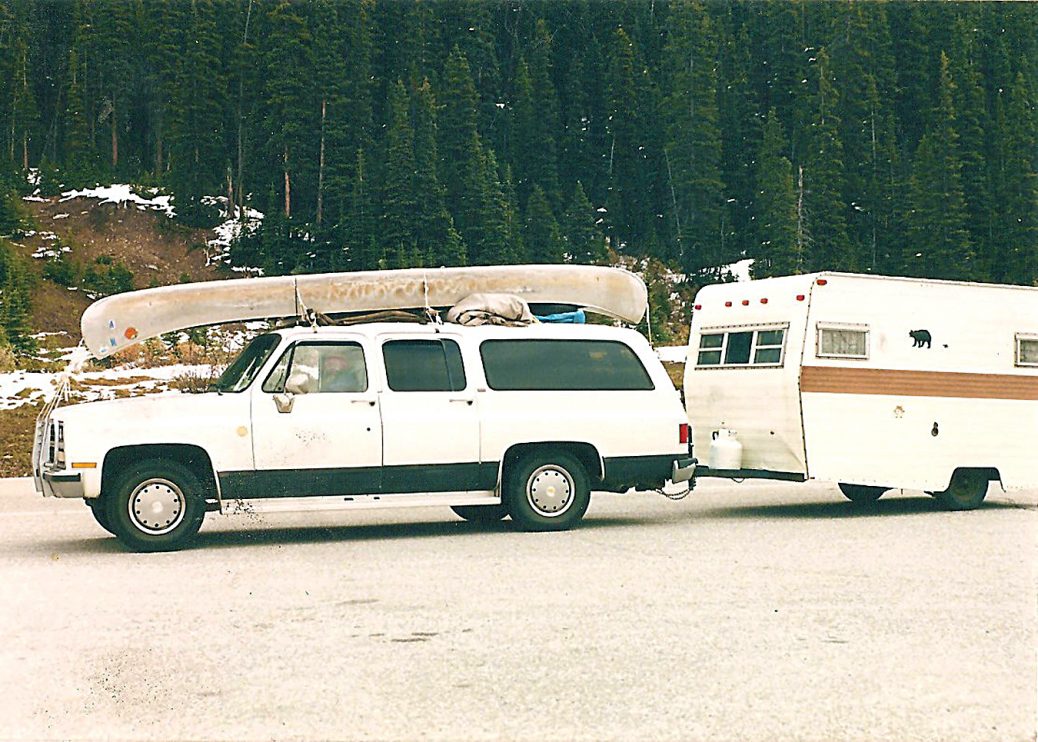
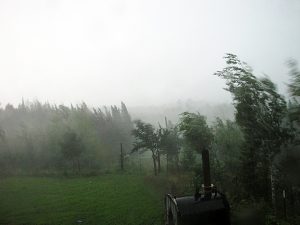
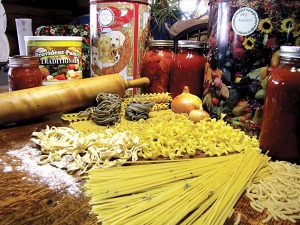
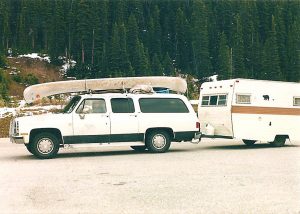
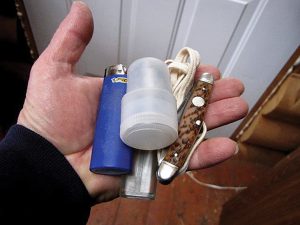
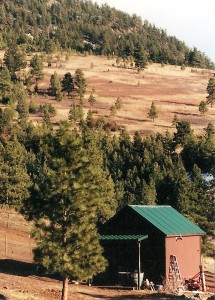
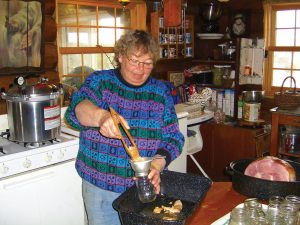
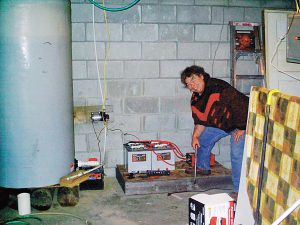
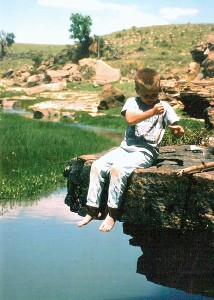
“Make sure you have a good road map. … Don’t rely on a GPS; in some situations, towers may be down.”
Jon C Cox, while you are correct: {GPS = Global Positioning System, a satellite-based radio navigation system owned by the United States government}, her advice stands as more people call their car and/or phone’s navigation system ‘GPS’ than refer to their electronic navigator as ‘my cell tower triangulation navigation system’ or even ‘google maps’.
Leaving the reader with the sound advice: carry a paper map incase a cell tower or two is off-line because of flood/fire-
Just to clarify, GSP depends on satellites, not towers. So, unless several GPS satellites somehow fall out of orbit, GPS will always be available.